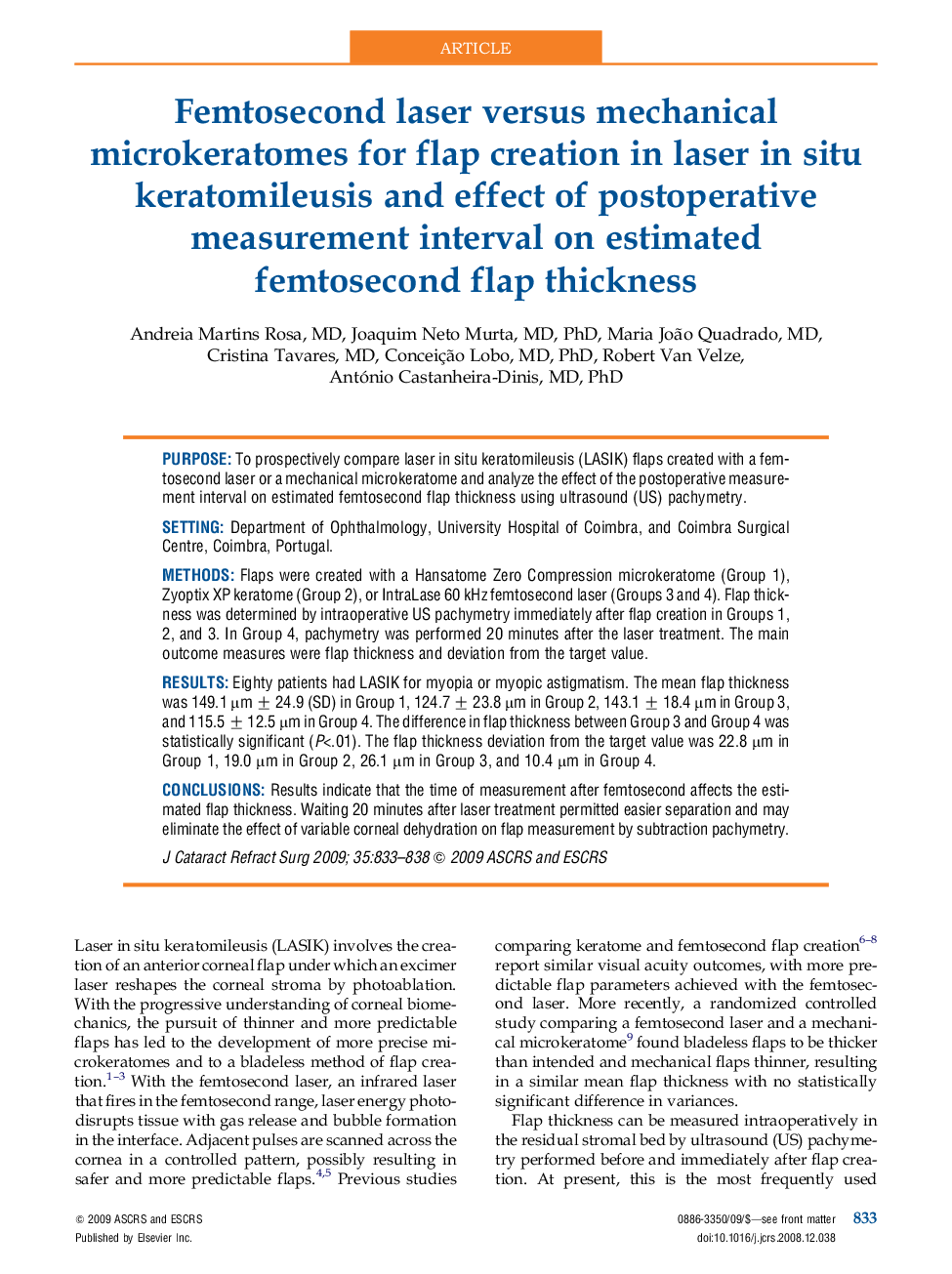| Article ID | Journal | Published Year | Pages | File Type |
|---|---|---|---|---|
| 4021551 | Journal of Cataract & Refractive Surgery | 2009 | 6 Pages |
PurposeTo prospectively compare laser in situ keratomileusis (LASIK) flaps created with a femtosecond laser or a mechanical microkeratome and analyze the effect of the postoperative measurement interval on estimated femtosecond flap thickness using ultrasound (US) pachymetry.SettingDepartment of Ophthalmology, University Hospital of Coimbra, and Coimbra Surgical Centre, Coimbra, Portugal.MethodsFlaps were created with a Hansatome Zero Compression microkeratome (Group 1), Zyoptix XP keratome (Group 2), or IntraLase 60 kHz femtosecond laser (Groups 3 and 4). Flap thickness was determined by intraoperative US pachymetry immediately after flap creation in Groups 1, 2, and 3. In Group 4, pachymetry was performed 20 minutes after the laser treatment. The main outcome measures were flap thickness and deviation from the target value.ResultsEighty patients had LASIK for myopia or myopic astigmatism. The mean flap thickness was 149.1 μm ± 24.9 (SD) in Group 1, 124.7 ± 23.8 μm in Group 2, 143.1 ± 18.4 μm in Group 3, and 115.5 ± 12.5 μm in Group 4. The difference in flap thickness between Group 3 and Group 4 was statistically significant (P<.01). The flap thickness deviation from the target value was 22.8 μm in Group 1, 19.0 μm in Group 2, 26.1 μm in Group 3, and 10.4 μm in Group 4.ConclusionsResults indicate that the time of measurement after femtosecond affects the estimated flap thickness. Waiting 20 minutes after laser treatment permitted easier separation and may eliminate the effect of variable corneal dehydration on flap measurement by subtraction pachymetry.
